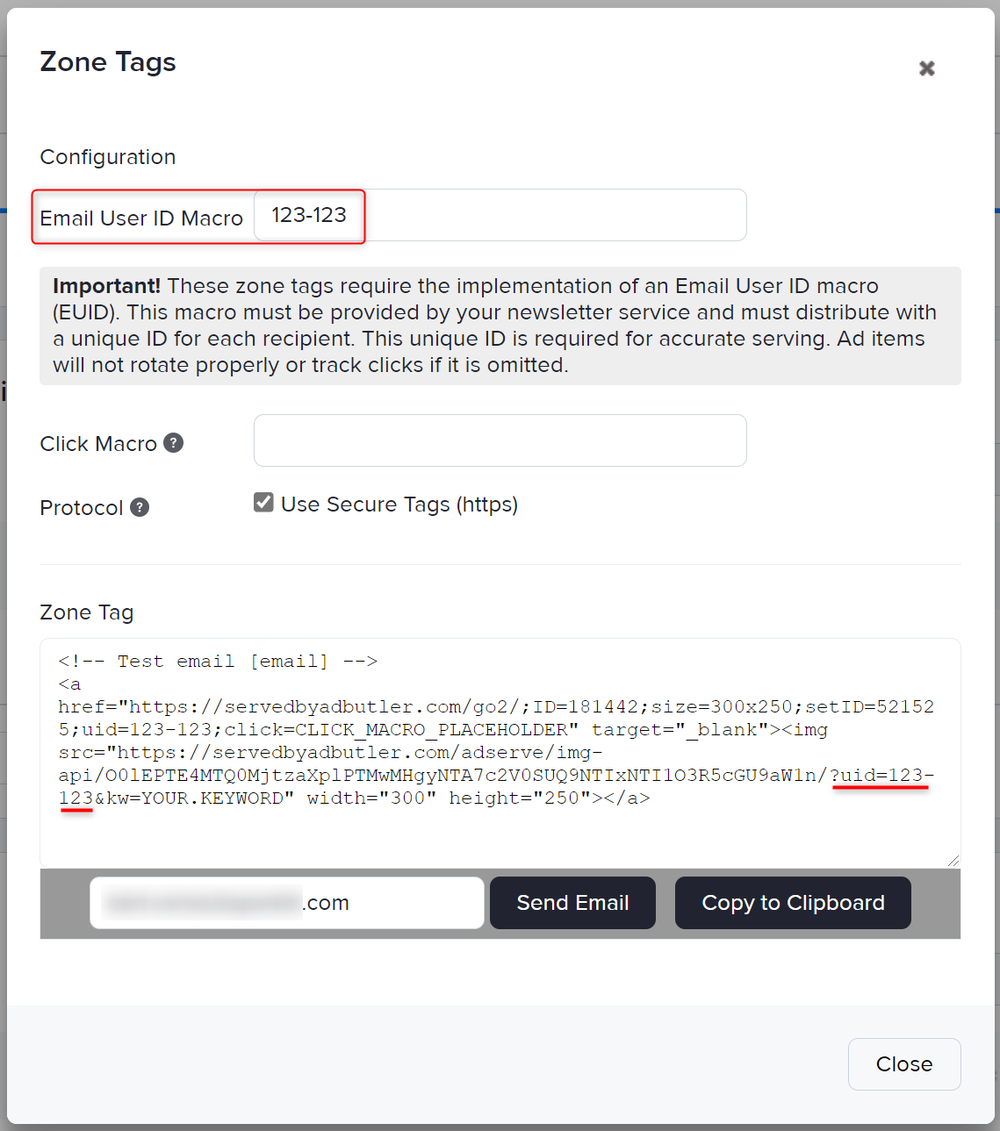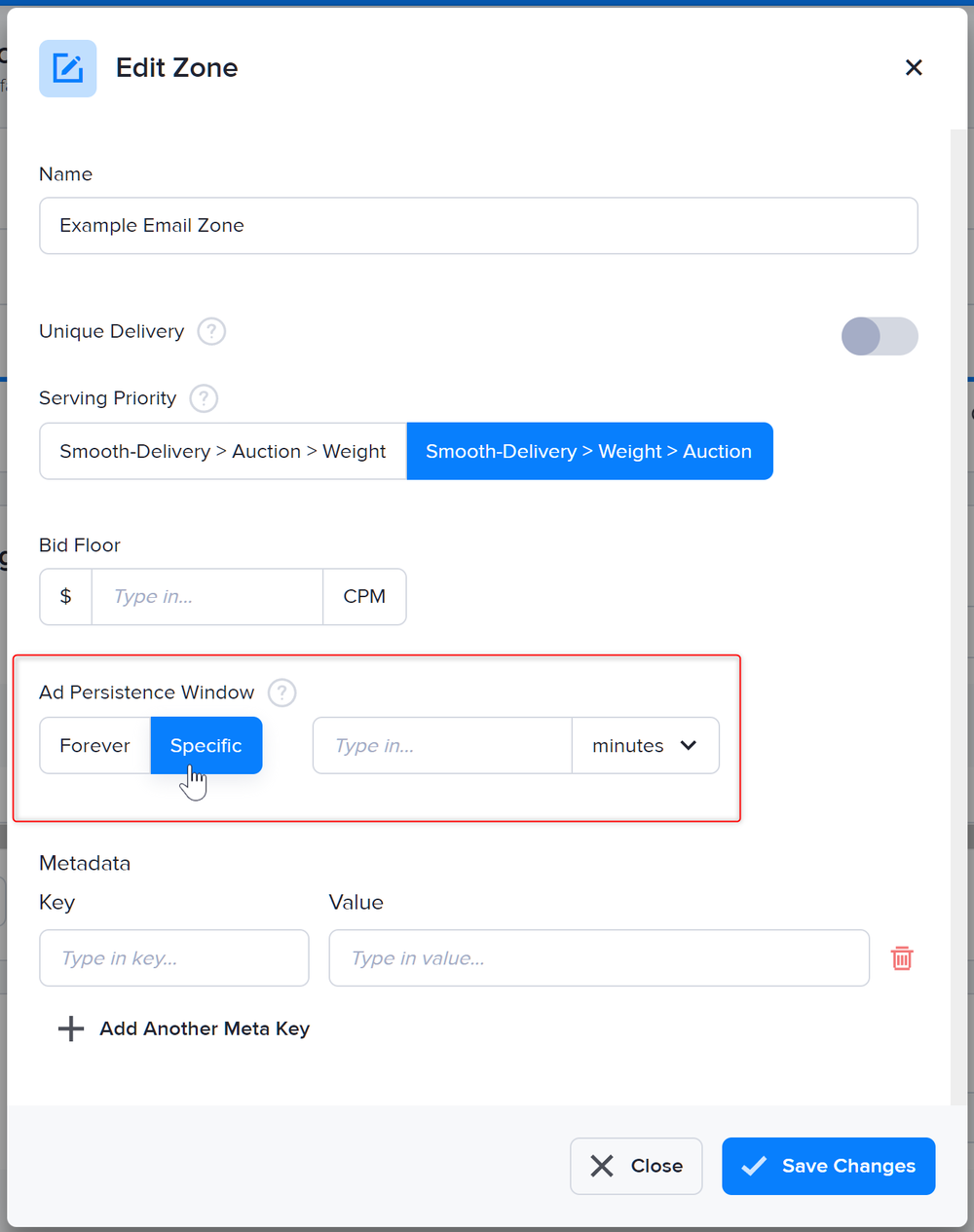Email ads and the EUID
The EUID and the EUID macro
The Email Unique Identifier macro is a piece of code provided by your email platform. It generates an ID - the aforementioned Email Unique Identifier (EUID) - for every email that gets sent out. To serve ads in emails, you must enter your email platform's EUID macro into your email ad zone tag settings in AdButler before adding the tag to your email template.

Not only should the EUID macro be correct, the EUID it generates should actually be unique for each recipient so that AdButler can properly count impressions and clicks as well as know where to redirect recipients when they click on an ad.
Problems with the EUID
To see what can happen when AdButler is given faulty EUIDs, let's look at a simple scenario:
You sent an email newsletter to two people - John and Jane. The newsletter has a zone with two assigned campaigns: campaign A and campaign B. Unfortunately, your EUID macro gave John and Jane the same EUID: 1234.
When John opened the newsletter, he saw an ad from campaign A. AdButler doesn't know anything about John except for his EUID. To log the impression, AdButler makes an entry in our database that effectively says, "User 1234 saw an ad from campaign A."
Jane then opened the newsletter after John. She saw an ad from campaign B. AdButler then updates its database to say, "User 1234 just saw an ad from campaign B."
John and Jane are obviously different people, but because their EUID is the same, AdButler thinks that there's only one User 1234 and that that user has seen ads from campaigns A and B.
It can get worse. Because the last ad that User 1234 saw was from campaign B, if John clicks on the ad in his email, he will be taken to the destination page for campaign B, even though the ad he saw is from campaign A.
You can see how confusing and frustrating this would be for both users and advertisers. The more recipients that share an EUID, the worse the problem becomes.
AdButler's default email ad serving setting
By default, AdButler will forever show the same ad to a user based on their EUID. This alleviates the issues caused by incorrect or suboptimal EUID macros. Going back to John and Jane, since they have the same EUID, by default Jane will see the same ad that John saw. This way, the impression and click counts as well as the destination page for that ad will remain accurate, regardless of who views or clicks on the ad.
Of course, that default behavior may not be optimal for your set up. That's why we made it so you can override it. In your email ad zone's properties, you can change a setting called Ad Persistence Window to Specific and enter an interval. Your recipients will now see a new ad each time the interval passes. But we must stress that your EUID macro should be properly configured to avoid problems should you modify this setting.

Testing EUID macros
Many email platforms have a test feature. Unfortunately, these tests usually do not involve triggering the EUID macro to generate EUIDs, which means the test won't reveal any errors with your EUID macro. We highly recommend that you test your email campaigns by sending them to a few recipients.
EUID macros vary across different email platforms. For examples of EUID macros from popular email platforms, check out Common Newsletter Email Unique IDs.